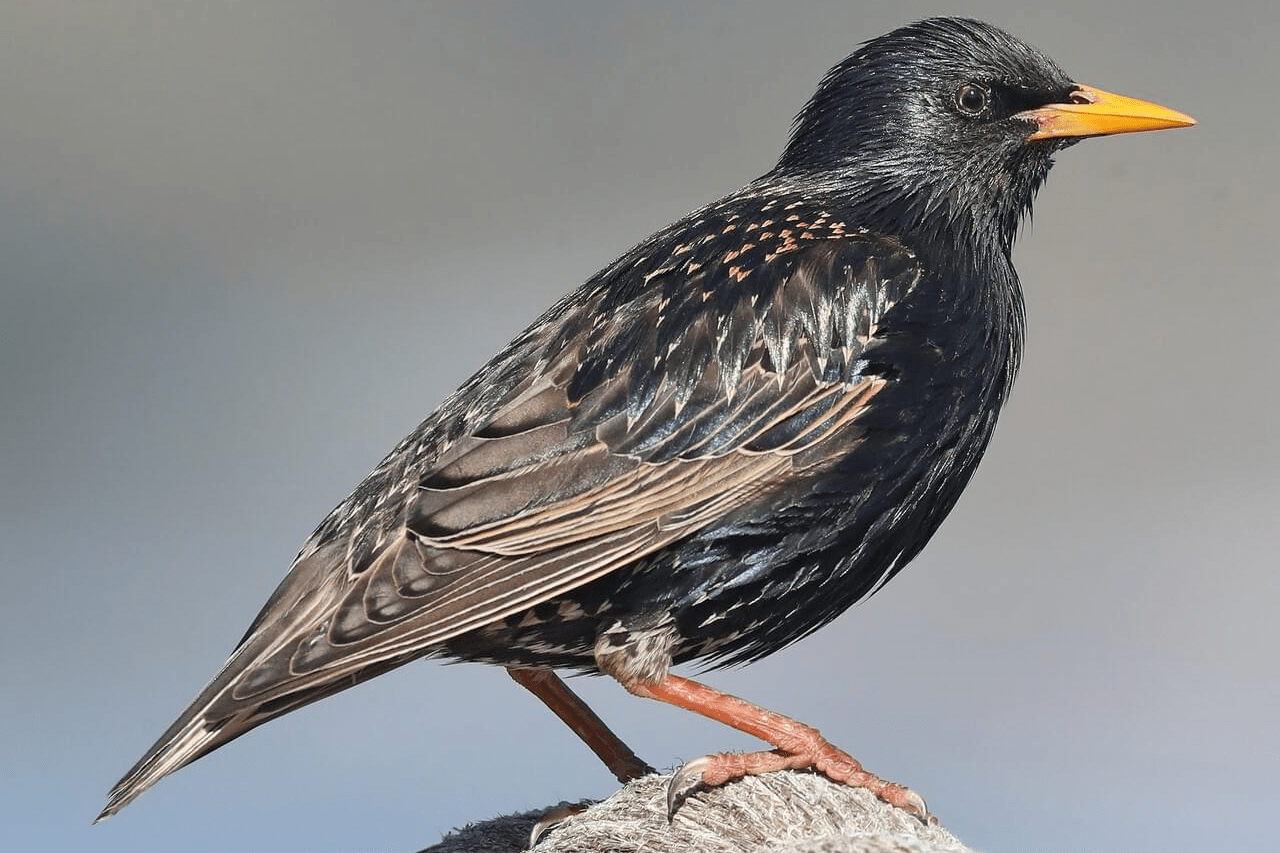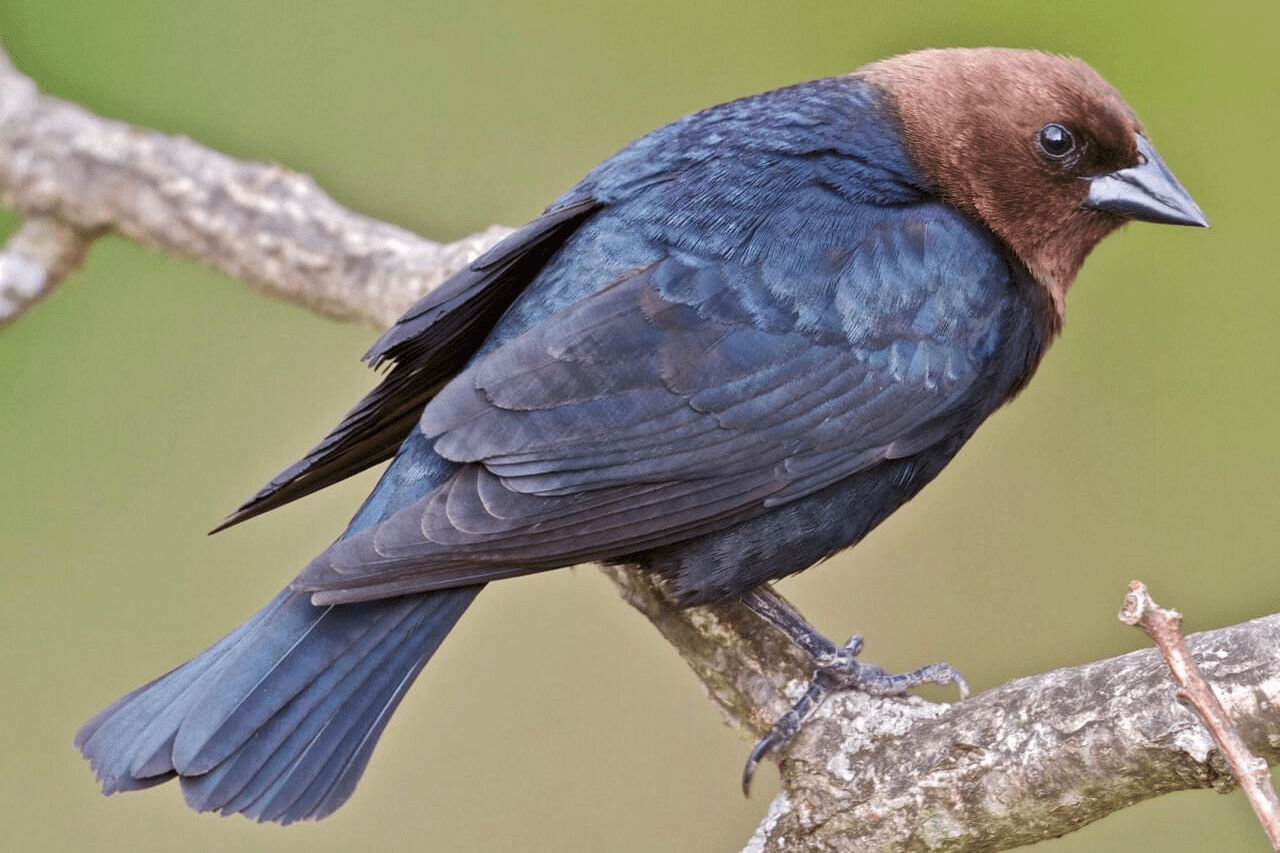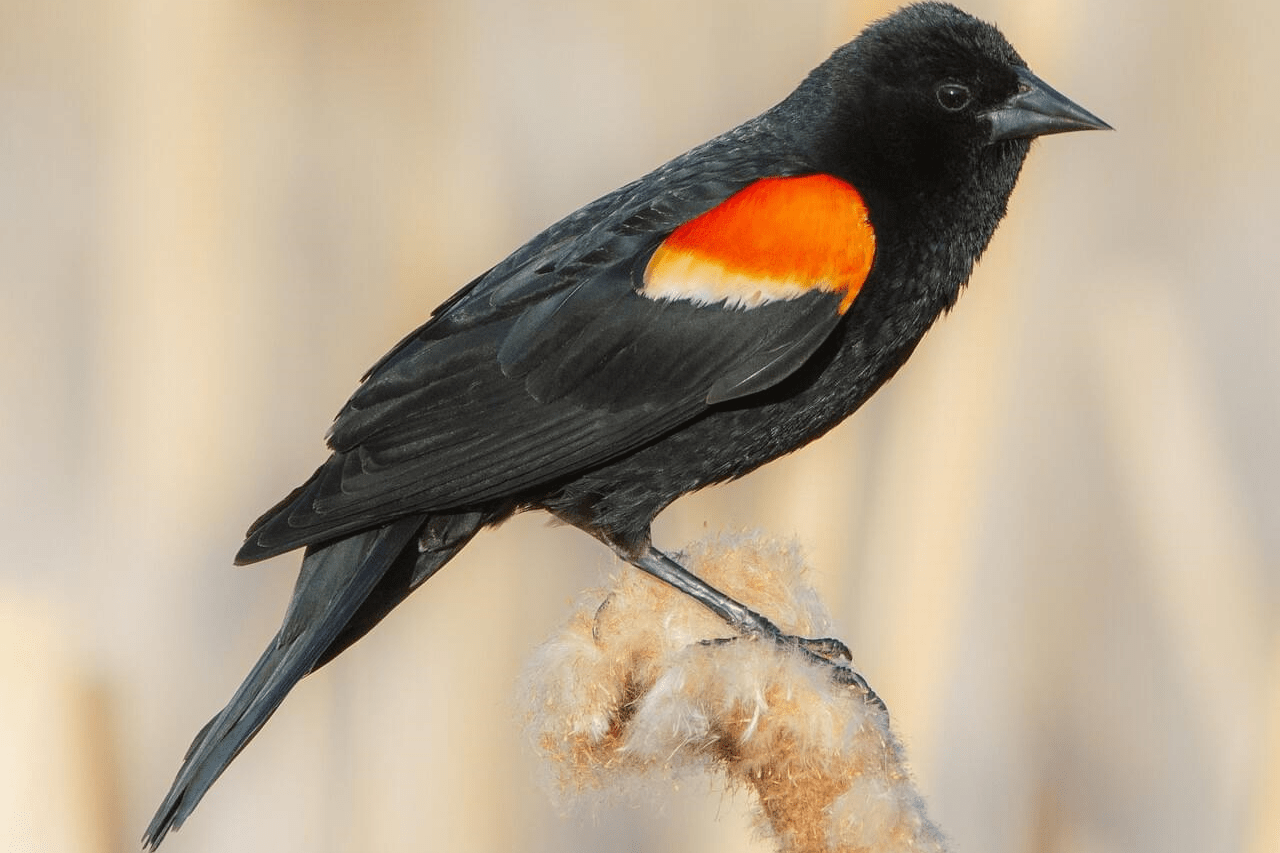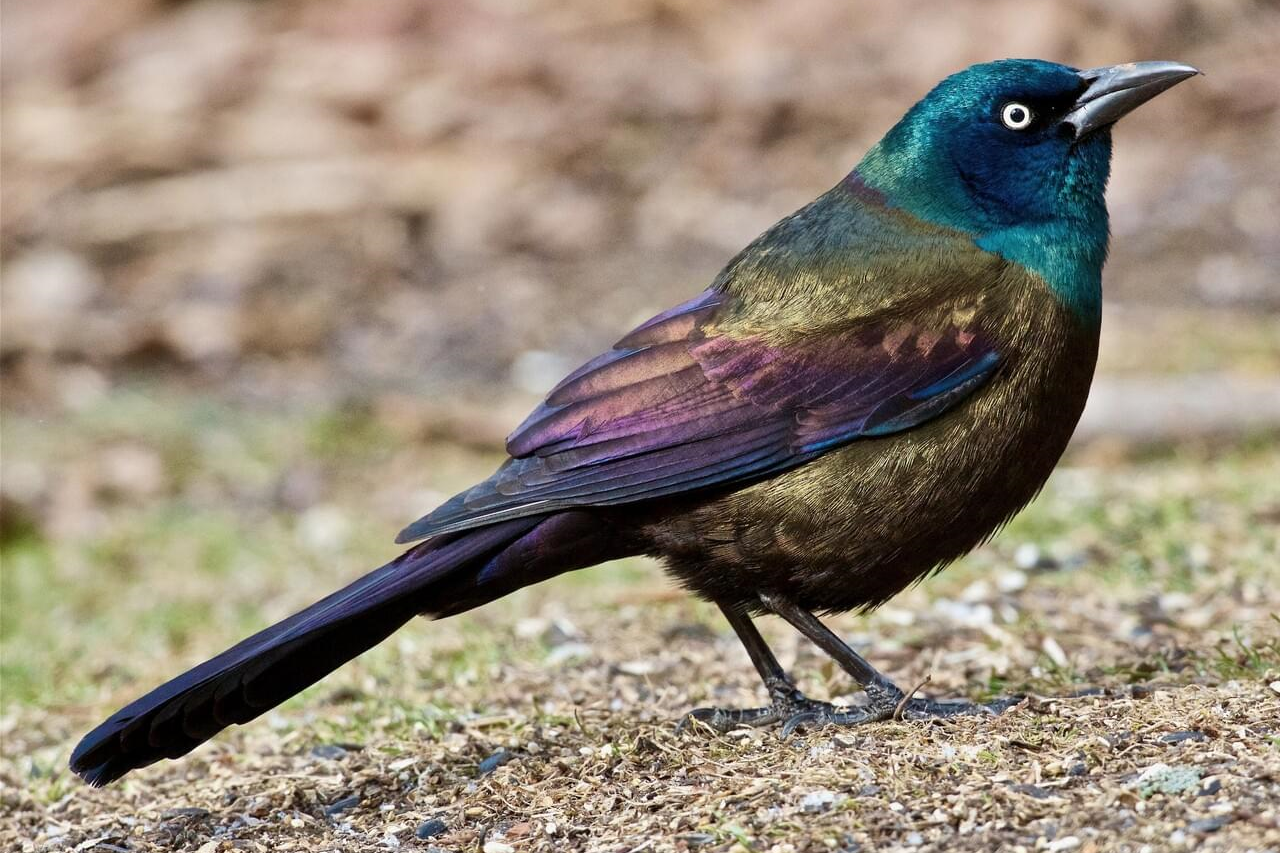Operational Activities: Starlings and Blackbirds
The term "blackbird" refers to a varied group of about 10 species of North American birds. The most common species associated with damage are: red-winged blackbird, common grackle, great-tailed grackle, brown headed cowbird, yellow headed blackbird, and the Brewer's blackbird. The families of blackbirds are the most plentiful bird type in North America and are widely distributed in the United States.
European starlings, an introduced species, share similar characteristics and behaviors with blackbirds and are often found in flocks with them. Starlings negatively impact property, agriculture, and natural resources. Many conservationists consider starlings an invasive species, harmful to North American ecosystems.
Presence and abundance of these birds may fluctuate seasonally due to regional movement patterns. Combined with crows, winter populations of European starlings and blackbirds are estimated between 750 million and 1 billion birds.
Biology and Ecology
Understanding Wildlife, Damage and Management
Blackbirds and starlings congregate in large flocks and may be involved in a wide range of conflicts. Damage problems associated with these birds occur in agricultural settings as well as in urban/suburban areas.
Damage to Property
Because blackbirds and starlings congregate in large groups, their excessive feces can cause health concerns and property damage. Large roosts that occur in buildings, industrial structures, or in trees produce health concerns, noise, and odor. Droppings pose safety hazards at industrial structures, contributing to slippery conditions and corrosion on equipment, resulting in huge clean-up costs.
Damage to Agriculture
Blackbirds and starlings damage crops, causing estimated annual damage to grain, fruit, and berry crops of more than $150 million in direct costs and incalculable costs associated with management to prevent losses and health and safety hazards. The global market accounts for almost half of the U.S.-produced rice sales volume annually. Blackbirds damage more than $20 million dollars in rice each year in addition to management costs.
Starlings and other birds also congregate at cattle feedlots and dairies, where they consume high protein supplements in livestock feed, leading to contamination and possible disease transmission within and between livestock facilities. A 2009 survey of Pennsylvania dairy producers suggested that veterinary costs at dairies with starling flocks numbering between 1,000 and 10,000 birds were 38 percent higher ($91 per cow per year) than at dairies without starlings ($66). Starlings also contribute to salmonellosis and gastrointestinal diseases in livestock that cost producers over $600 million annually.
Health and Safety Concerns
European starlings and blackbirds pose safety hazards because they can collide with aircraft, resulting in human death or injury and property loss. They are especially hazardous due the large size of their flocks, their flight behaviors, and their overall abundance across the United States. During 1990-2018, 7,534 blackbird and starling birdstrikes to civil aircraft resulted in more than $9 million in damage. In 1960, 62 people aboard a commercial aircraft were killed after the plane collided with a flock of starlings at Boston's Logan Airport.
Large flocks of roosting blackbirds and starlings commonly create accumulations of droppings raising health concerns about the fungal respiratory disease, Histoplasmosis. The fungus that causes the disease (Histoplasma capsulatum) occurs in the soil in bird roosts where excessive droppings have accumulated. Although the chronic form of this disease is rare, it can be a concern for people with weakened immune systems.
Damage to Natural Resources
Brown-headed cowbirds — a type of blackbird — lays their eggs in the nests of other birds, which benefits the cowbird but harms the host-bird species. The cowbird chicks hatch earlier than most songbirds and aggressively out-compete the host species' chicks for food. Often, the songbird chicks die and the cowbirds thrive. Nest parasitism by cowbirds was a factor contributing to the decline of the Kirtland's warbler, a Federally delisted songbird that nests only in young stands of jack pine in Michigan, Wisconsin and Canada.
Starlings can impact native birds by competing for food and other habitat resources. Where nest cavities are scarce, starlings and blackbirds are adept at occupying them and excluding native cavity-nesting species such as bluebirds, flickers, woodpeckers, and purple martins.
Employing an integrated wildlife damage management approach, which includes multiple non-lethal and lethal methods, can effectively manage pest birds such as starlings and blackbirds. Typical methods for controlling starling damage include a combination of harassment, exclusion, pyrotechnics, shooting, and trapping. Non-lethal methods, such as exclusion, have proven effective at reducing starling damage to fruit crops. Nightly harassment at roost sites utilizing lasers, or in some cases habitat modification to remove roost trees and structures, may be needed to deter starlings from using an area. Limiting the availability of food and water is another major key to controlling starling damage, especially on dairy farms. This may include changing livestock feeding schedules and reducing pooled water levels in watering tanks.
When other methods do not reduce damage, Wildlife Services trained and certified staff can use DRC-1339 Concentrate, a pesticide affecting only birds, to effectively reduce local targeted species without harming people, pets or other wildlife. Other pesticides may be used in feedlots and dairies in certain, specific circumstances. Research conducted by Wildlife Services’ National Wildlife Research Center (NWRC), showed that alternative treatments, such as sodium lauryl sulfate, may be used in some locations under specific conditions to manage damage from large roosts. Trapping also can be an effective method. Contact your local Wildlife Services office for more information.
Wildlife Services provides technical information about managing damage caused by wildlife and has posted WS Wildlife Damage Technical Series publications on starlings and blackbirds.
Blackbirds are managed effectively using multiple methods concurrently. Delaying planting or providing alternate feeding sites, as well as timely crop harvest can reduce blackbird damage to agricultural areas. Harassment using propane exploders and pyrotechnics, visual bird frightening devices such as Mylar ® tape and animated scarecrows, frightening with pesticide agents such as Avitrol, and repellents have proven successful at reducing damage caused by blackbirds. Lethal shooting can be used to reinforce harassment efforts.
Regulations Pertaining to Permitting
As an invasive species, European starlings are not protected by the Migratory Bird Treaty Act (MBTA) and do not receive any Federal protection. Some states may have hunting seasons on European starlings which may require a permit to take them. Always check state and local laws and ordinances before attempting any management actions or methods.
Blackbirds have some protections from the U.S. Fish and Wildlife Service (FWS) and State wildlife agencies under the Migratory Bird Treaty Act, State laws, and regulations. Through a Federal Depredation Order (50 CFR 21.43) issued by the FWS, people are authorized to take some blackbird species, including grackles and crows, when they are involved in certain damage situations, without a Federal permit.
Nonlethal methods to reduce damage by protected blackbirds must be tried each year before using lethal controls and state laws should also be checked before acting. For bird species not listed in the Depredation Order, a Migratory Bird Depredation Permit must be obtained from the US Fish and Wildlife Service (FWS), and State laws must be consulted and adhered to, prior to initiating actions to remove birds or handle their nests and eggs.
More Information
Wildlife Services' National Wildlife Research Center (NWRC) conducts research on a wide variety of wildlife damage issues. NWRC scientists at the North Dakota Field Station focus on developing methods to reduce damage by blackbirds and invasive European starlings. The NWRC North Dakota field station has published numerous research publications and reports including a book titled The Ecology and Management of Blackbirds (Icteridae) in North America, edited by Linz, Avery & Dolbeer. Wildlife Services co-hosted the 2020 Bird Damage Management Conference with Utah State University’s Berryman Institute, and the US Geological Survey.
More Information
European Starlings
Wildlife Damage Management Technical Series: European Starlings (2.17 MB)
Modifying a European Starling Trap (4.26 MB)





